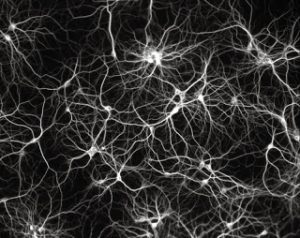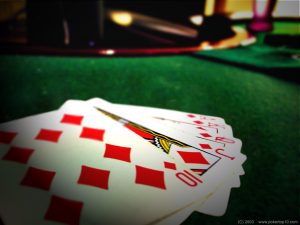 We will start by discussing how the brain functions. Don't worry, the information won't be presented in a complicated manner. It is simply important to understand how our brains relate to poker, so we will cover the basics that you need to know.
We will start by discussing how the brain functions. Don't worry, the information won't be presented in a complicated manner. It is simply important to understand how our brains relate to poker, so we will cover the basics that you need to know.
The basic unit of the brain is the neuron. Each neuron is connected to others through large networks known as neural networks. These networks are formed by numerous individual neurons connected by synapses, which are either weakened or strengthened depending on the signals from the neurons. Two neurons can be strongly connected due to frequent signals forming complex neural networks.
This strengthening or weakening of neural connections manifests in behavior as influence. In animal behavior, the trace of neural networks can be seen very clearly. There are two main types of influence: classical, where two stimuli are mentally connected and cause an expectation or reflex (e.g., a dog salivates upon hearing a food bell), and operant influence, where the consequence of behavior, positive or negative, strengthens or suppresses certain behavior (e.g., a dog being scolded for chewing a carpet or rewarded for following a command). Influence is one of the main ways animals (including humans) learn complex behaviors.
Not all neural networks or systems that determine behavior are created through such a painful principle. Some parts of our brain are very plastic and tend to quickly change their structure, so they will learn whatever you throw at them. Other parts of the brain are built with assigned functions that exist as essential pre-existing brain modules. For example, the regulation of internal organs, your sensory perception, as well as survival instincts, all of this came without any learning.
Now let's explore the cognitive process (a fancy word for thinking). It is a wonderful process, but it has certain bugs. We all experience errors in thinking from time to time. There are two main cognitive errors that you must know: learned errors and pre-cognitive, or innate errors. Learned errors are usually easily corrected since they were learned in a specific situation. They can simply be forgotten using the same neural mechanisms through reinforcement or suppression. Innate errors are more deceptive,  as they are often deeply embedded and encoded in our cognitive modules. Innate errors are like software with a defect. Once it is installed on our computer, we can no longer fix it so easily. These innate errors are also known as cognitive biases.
as they are often deeply embedded and encoded in our cognitive modules. Innate errors are like software with a defect. Once it is installed on our computer, we can no longer fix it so easily. These innate errors are also known as cognitive biases.
When it comes to learning, cognition, emotions, and the reinforcement and suppression of habits, it is crucial to keep these potential brain blocks in mind. Almost all human experience, intelligence, and creativity arise from the cooperation of neural connections, strengthening or weakening internal mutual connections.
This is also where poker comes in. The game of poker is not just a game played with 52 cards on a board. It is a game played between people. We are part of the poker game. The game does not end with the cards. The game extends beyond the table and continues in our minds. To understand poker, you need to understand how our mind works, how we think, reason, what we expect, and how we fail.
Of course, no one is saying that as poker players we can reduce the concept of cognition only to the cooperation of neurons (without saying anything about neuroscience). Nevertheless, these concepts will help understand the patterns of players' actions and the logic that is caused by our cognitive functions. Despite the complexity, what is made up of neurons must be understood and examined.





